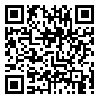Volume 14, Issue 10 (1-2015)
Modares Mechanical Engineering 2015, 14(10): 85-92 |
Back to browse issues page
Download citation:
BibTeX | RIS | EndNote | Medlars | ProCite | Reference Manager | RefWorks
Send citation to:



BibTeX | RIS | EndNote | Medlars | ProCite | Reference Manager | RefWorks
Send citation to:
Talebi R, Marzban J, Haddadi M. Control of the active anti-roll bar of Off-Road vehicle for roll stability improvement. Modares Mechanical Engineering 2015; 14 (10) :85-92
URL: http://mme.modares.ac.ir/article-15-7116-en.html
URL: http://mme.modares.ac.ir/article-15-7116-en.html
Abstract: (4953 Views)
In this paper, a control system is designed to reduce roll angle which consequently leads into increasing vehicle roll threshold during high lateral accelerations. Accordingly, the two same rotation-electric actuators are mounted on front and rear suspension system anti-roll bars. This control system turns by applying an opposite couple that is acted upon the chassis, as time varying, reduce the lateral acceleration as it possible and improves lateral stability and roll threshold during extreme maneuvers. In order to find out the effects of the performance of this active system on vehicle stability, firstly based on a nonlinear eight degrees of freedom model of the lateral dynamics of the vehicle and by taking Steering angle as an input, the kinematic parameters and finally roll threshold that is defined lateral load transfer, is estimated. Then, the optimized second order control theory with three degrees of freedom of the vehicle model is used to design the controller. Finally, with the aid of comprehensive model of the vehicle, the lateral dynamics of the vehicle as well as the effects of the controller during path of standard Fish hook maneuver are investigated.
Article Type: Research Article |
Subject:
Dynamics, Cinematics & Mechanisms|robatic|Control|Mechatronics
Received: 2013/12/29 | Accepted: 2014/04/5 | Published: 2014/09/27
Received: 2013/12/29 | Accepted: 2014/04/5 | Published: 2014/09/27
| Rights and permissions | |
 |
This work is licensed under a Creative Commons Attribution-NonCommercial 4.0 International License. |







